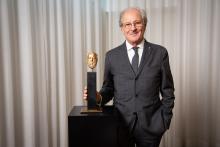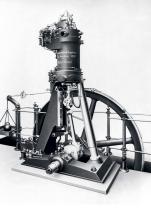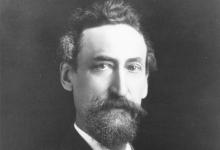
Fuel efficiency is driving modern engine development but it was demand for more power that drove early innovation. Claire Symes takes a look at the advances at Deutz with a visit to the company's museum
The names Daimler, Maybach and Bugatti may all be synonymous with luxury, high powered cars today but the men behind these names all got started in the engine industry through a common link -
Today many major construction equipment manufacturers rely on Deutz engineering as the driving force of their new machines. This position in the market has been built on the innovation heritage which exists within the company and the history is clearly evident in the company's museum at the factory in Cologne.
The museum charts the company's history from its foundation in 1864 by salesman Otto and sugar merchant Langen with artefacts from the company's development including early engines. The company's first engine was a 0.5Hp unit and was built in the Otto Gasmototren-Frabrik Deutz workshop. The name of Deutz comes from the district where the workshop was located.
One of the most valuable items must be the world's first four-stroke combustion engine which was designed by Otto and unveiled in 1876 offering 3Hp at 180rpm. This single cylinder stationary engine test machine still works although it needs a specialist to operate it.
The company released its first four-stroke engines for sale in 1877 when it launched the Type A - with the name of Otto's New Engine - under the supervision of Wilhelm Maybach and Gottlieb Daimler. The engines were also manufactured under licence by Crossley Bros in the UK.
In 1880 the company developed a twin flywheel version of its engine which was used to power lights fitted to the outside of Cologne Cathedral - the first illumination of a building in the world.
In 1884 Otto invented the low-voltage magnetic ignition which allowed engines to use liquid fuels for the first time, rather than mains gas, which cleared the way for engines to be used in mobile solutions.
In 1884, Otto added the carburettor to his list of innovations.
The company launched its first petrol engine in 1885 and the unit on display in the museum was in regular use up until 1965. This innovation was developed further by Maybach and Daimler after they left the company and resulted in the first fast running petrol engine which was used to power the world's first four wheeled car in 1886. Bugatti also developed a car range for Deutz between 1907 and 1909 and when he left to set up his own car company, he adapted the Deutz badge for his own company logo.
Further innovation came at Deutz in 1898 when the company launched its first diesel engine without a crosshead and omission of the heavy joints connecting the piston rod to the con rod considerably reduced the height of the engine. A few years later the engineers at Deutz developed the first direct injection diesel engines.
Innovation has continued over the last century with addition of pre-combustion chambers to create fast running diesel engines in 1930 and development of air-cooled systems in 1944. After a break in production during and after the Second World War, development of diesel engine technology continued at Deutz and today the Cologne factory manufactures customised engines for OEMs worldwide.









